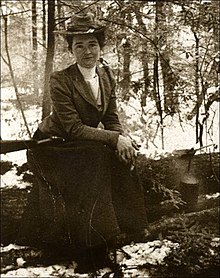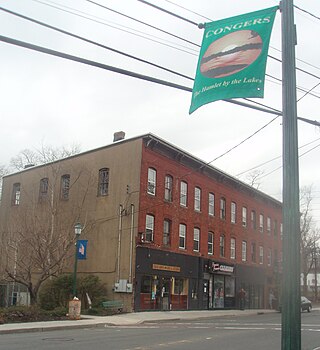
Congers is a suburban hamlet and census-designated place in the town of Clarkstown, Rockland County, New York, United States. It is located north of Valley Cottage, east of New City, across Lake DeForest, south of Haverstraw, and west of the Hudson River. It lies 19 miles (31 km) north of New York City's Bronx boundary. As of the 2020 census, the population was 8,532.
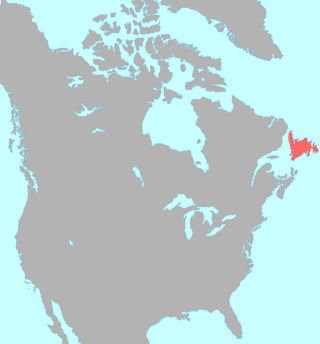
The Beothuk were a group of indigenous people who lived on the island of Newfoundland.

Princess Louise, Duchess of Argyll, was the sixth child and fourth daughter of Queen Victoria and Prince Albert.

Events from the year 1903 in Canada.

North West River is a small town located in central Labrador. Established in 1743 as a trading post by French Fur Trader Louis Fornel, the community later went on to become a hub for the Hudson's Bay Company and home to a hospital and school serving the needs of coastal Labrador. North West River is the oldest modern settlement in Labrador.

George River, formerly the East or George's River, is a river in northeastern Quebec, Canada, that flows from Lake Jannière mainly north to Ungava Bay.

Leonidas Hubbard Jr. was an American journalist and adventurer.
Indian Harbour is a former settlement in Newfoundland and Labrador.
Neil Diamond is a Cree-Canadian filmmaker born and raised in Waskaganish, Quebec. Working with Rezolution Pictures, Diamond has directed the documentary films Reel Injun, The Last Explorer, One More River, Heavy Metal: A Mining Disaster in Northern Quebec and Cree Spoken Here, along with three seasons of DAB IYIYUU, a series for the Aboriginal Peoples Television Network about Cree elders.

Margaret Eleanor Anne Hart was a Canadian author who specialized in biographies. She was best known for her Agatha Christie character biographies: The Life and Times of Miss Jane Marple and The Life and Times of Hercule Poirot, and for her role as head of the Centre for Newfoundland Studies from 1976 until her retirement on January 1, 1998. In 2004, Hart was made a Member of the Order of Canada for her "lasting contributions to the cultural life of her province."
Michikamau Lake, in Labrador, Canada, was absorbed into Smallwood Reservoir upon the completion of the Churchill Falls Generating Station in 1974. The lake makes up the largest part of the eastern section of the reservoir, while Lobstick Lake, also absorbed in Smallwood's creation, makes up the largest part of the western section. The lake is up to 84 meters deep https://cdnsciencepub.com/doi/10.1139/f74-125 Reaching the lake was the goal of an expedition by Leonidas Hubbard, Dillon Wallace, and George Elson described in Wallace's memoir, The Lure Of The Labrador Wild.
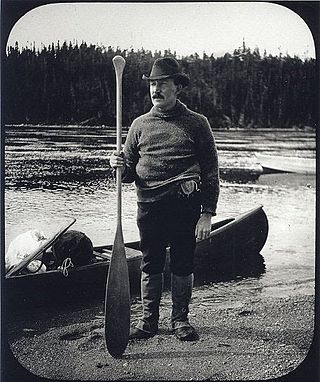
Dillon Wallace (1863-1939) was an American lawyer, outdoorsman, author of non-fiction, fiction and magazine articles. His first book, The Lure of the Labrador Wild (1905) was a best-seller, as were many of his later books.
Kirkina Mucko also known as Elizabeth Mukko, (1890-1970) was a Canadian Inuit nurse and midwife. Having lost her legs as a child, and possibly her parents, she was raised in a series of mission homes, hospitals and boarding schools. Returning from abroad around 1908, she worked at the Grenfell Mission in Labrador. After losing family members in the 1918 flu pandemic, Mucko trained as a nurse and midwife, providing services for her community until her later years. A women's shelter in Rigolet has been named in her honor.

The Wabe is an architecturally eclectic detached house on Redington Road, Hampstead, London, built in 1902–1903 for the academic and mathematician William Garnett. It was subsequently the home of the Canadian explorer Mina Hubbard and her husband, and later of the actor Tom Conti and his wife.
Henry Locke Paddon was a British doctor and medical missionary in Canada.

The Naskaupi River is the second largest river in Labrador, Canada. Its drainage basin lies north of that of Labrador's longest river, the Churchill River. Like the Churchill River, it drains into the western end of the estuary known as Lake Melville.

Mary Jobe Akeley was an American explorer, author, mountaineer, and photographer. She undertook expeditions in the Canadian Rockies and in the Belgian Congo. She worked at the American Museum of Natural History creating exhibits featuring taxidermy animals in realistic natural settings. Akeley worked on behalf of conservation efforts, including her advocating for the creation of game preserves. She founded Camp Mystic, an outdoor camp for girls.
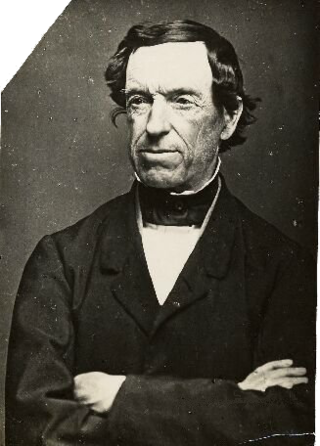
John McLean was a Scotsman who emigrated to British North America, where he became a fur-trapper, trader, explorer, grocer, banker, newspaperman, clerk, and author. He travelled by foot and canoe from the Atlantic to the Pacific and back, becoming one of the chief traders of the Hudson's Bay Company. He is remembered as the first person of European descent to discover Churchill Falls on Canada's Churchill River and sometimes mistakenly credited as the first to cross the Labrador Peninsula. Long overlooked, his first-person accounts of early 19th-century fur trading in Canada are now valued by historians. Under the pen name Viator, his letters to newspapers around Canada also helped shift public opinion away from yielding the western territories to the United States during the Alabama Claims dispute over damages for British involvement in the American Civil War.
Maria, the youngest daughter of Quaker John Rowntree, a grocer in Scarborough, and Jane Priestman.
Martha Craig was an explorer, writer and lecturer on scientific theories from Ireland. She was considered to be the first European woman to explore the Labrador region of Canada, assisted by indigenous guides in 1905. She claimed to have been made a princess by "the Indian chiefs" of Labrador, and lectured in the US, Canada and Europe as 'Princess Ye-wa-ga-no-nee'. She wrote and lectured on her scientific theories based on her observations in Labrador and her belief in reincarnation. She was invited to meet US President McKinley and was the first woman to lecture in the University of Salamanca. She wrote poetry, non-fiction and science fiction books. Some of her poetry was published as Maeve Carrig and she may also have written under the pseudonym Mithra. In 2021, a plaque commemorating her was erected in her home town of Gleno, Co Antrim.
